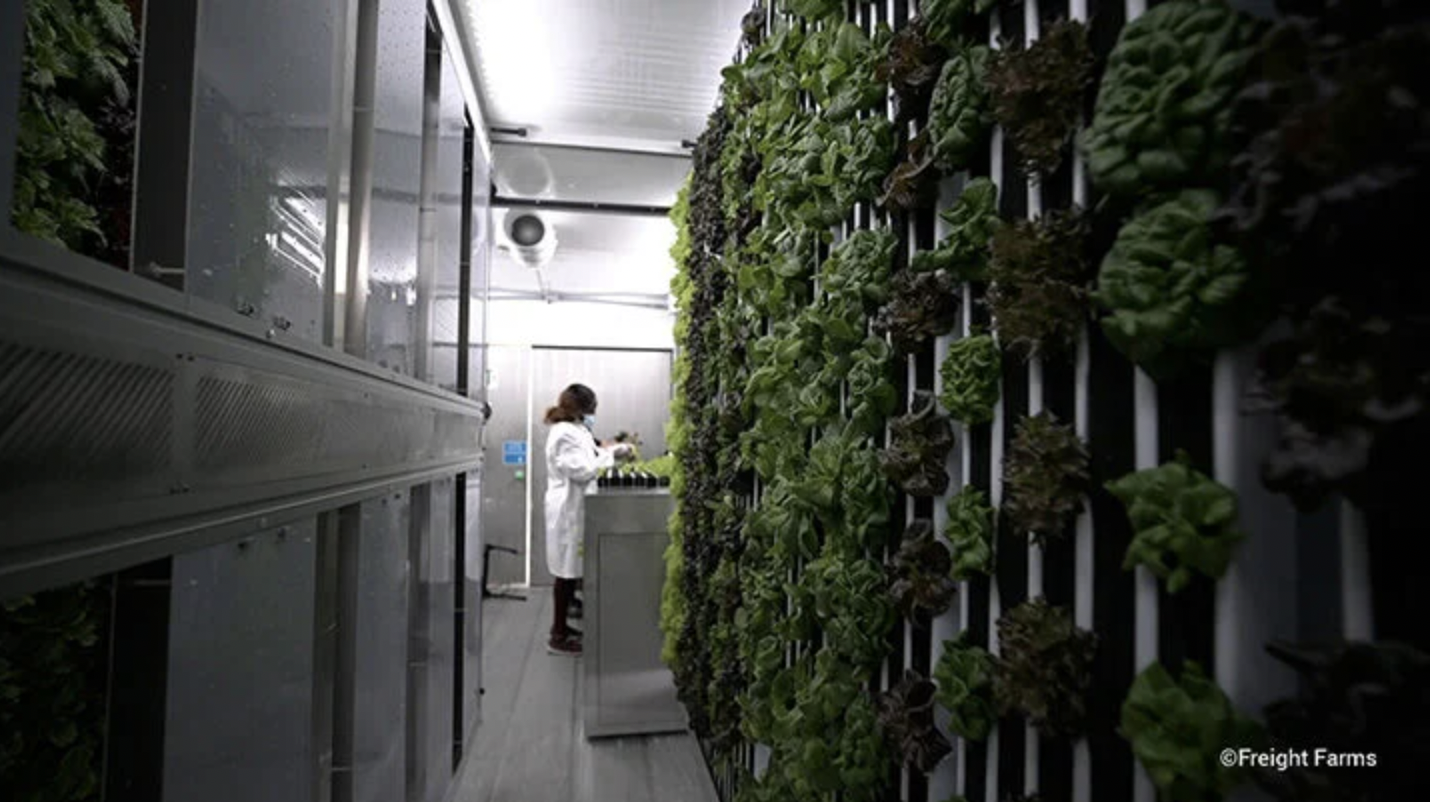Growing Farms One Converted Shipping Container At A Time
August 3, 2022
A farm operator works in a Freight Farms container farm. Vertical, hydroponic trays nurture a wall of leafy greens. (Photo courtesy of Freight Farms)
Year-round growing season, a controlled environment, productive in a self-contained, 8-by-40-foot space. Where some might see a shipping container, Boston-based Freight Farms realizes a hydroponic container farm with vertical growing trays.
Currently, five Freight Farms containers are raising crops in the greater Chicago area and one is in central Illinois, James Woolard, Freight Farms chief marketing officer, told FarmWeek. By this fall, five more container farms are expected to be delivered to the Chicago area, Woolard added. Visit freightfarms.com.
An assembled Freight Farms container costs $149,000 (manufacturer’s suggested retail price) with new owners advised to budget $160,000 to $170,000 for full installation costs. A typical return on investment is anticipated within two to three years, Woolard said.
With a closed-loop water system, a container uses about five gallons of water daily. “Any water captured by the farm’s dehumidifier is cycled into the farm’s water system, part of the reason why the farms are so water efficient,” Woolard explained.
In humid areas, the container farms can be “water-positive” with a farm’s dehumidifier pulling in more water from the air than plants consume, he noted.
Energy use is another consideration. The modular farms use LED light. Freight Farms’ current model comes with three pre-set LED power modes, allowing the farm operator to choose which one fits the operation.
Vertical trays of calendula flowers create colorful walls inside a Freight Farms container. The hydroponic, self-contained growing space accommodates different types of crops. (Photo courtesy of Freight Farms)
An economic mode uses an average of 168-kilowatt hours (kWh) per day. The standard mode “balances efficiency with high yields,” he said, and averages 191 kWh per day. To optimize yields, a performance mode would use about 231 kWh per day.
“We encourage our customers to treat their farms’ ‘day’ during the nighttime,” Woolard said. “This means the farms’ LED lights will turn on in the evening hours and run throughout the night when energy uses from the masses are lower.
“We have also seen that because the HVAC (heating, ventilation and air conditioning) unit for the farm has to work hard in the summer months when it is hot outside, electricity usage and costs are higher in those months,” he added.
Pointing to the container farms’ efficient use of water and other resources compared with other types of farming, Woolard acknowledged there is room to improve and optimize the containers’ energy uses.
“We see more and more advancements in the efficiency of this tech, a main focus of our research and development efforts,” he said.
Buyers can customize their Freight Farms containers inside and outside. While the interior comes fully assembled, Woolard said an owner can add shelves to grow microgreens, storage for farm supplies and other needs. He pointed out operators also customize interior temperatures, humidity, hydration and other conditions based on their crops.
As for the exterior, owners also determine their container’s appearance. Chicago sisters Jacqueline and Mary Kathryn Scala hired Chicago artist Nick Fisher to paint an urban mural on their container farm in the city’s Fulton Market District.
To date, Freight Farms has more than 500 container farms operating across 48 U.S. states and territories and 38 countries spanning five continents, Woolard said.
Lead photo: An 8-by-40-foot Freight Farms container is handled by a crane. The shipping containers are converted into self-contained, hydroponic farms that use LED lights. (Photo courtesy of Freight Farms)



